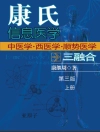All aspects of safe, effective, holistic care for birthing mothers, newborns, and their families are included in this easy-access guide for new antepartum and postpartum nurses and their preceptors during the orientation period. Presented in the convenient, easy-to-use Fast Facts format, the book provides up-to-date information regarding care for both low- and high-risk antepartum and postpartum patients. It encompasses evidence-based practice guidelines and clinical recommendations for routine antepartum assessment and nursing care, care of women with pre-existing conditions prior to pregnancy or complications of pregnancy, routine postpartum assessment and care, postpartum complications, and care of special populations. Each chapter features a helpful ìorientation guideî to acquaint the new orientee with essential information on procedures and policies, equipment, medications, and evidence-based protocols.
Chapters are organized systematically to include assessment and management guidelines, health promotion and teaching recommendations, routine laboratory and ultrasound tests, and holistic evidence-based nursing care practices. A separate section addresses special populations and outlines care components specific to these women and their families. They include culturally diverse families, women on each end of the age spectrum, women with fetuses or newborns diagnosed with adverse outcomes, women who have a history of being victimized, and those with deployed partners. While targeted to hospital-based nurses and new nurses in hospital orientation and their preceptors, it is also a helpful resource for nurses who practice in a great variety of related settings, as well as nurse midwifery students. Appendices include a skills checklist, a list of commonly used medications, abbreviations, and lab values.
Key Features:- Covers all aspects of safe, evidence-based, holistic care for birthing mothers, newborns and their families
- Written for nurses in orientation and their preceptors as well as nurses working with mothers and newborns in any practice setting
- Provides key information demonstrating the impact of newborn status on assessing, planning, and implementing care
- Includes an ìorientation guideî to acquaint new orientees with essential information on procedures, policies, equipment, medications, and evidence-based protocols
- Addresses specific care components needed for special populations
Tabla de materias
‘
PREFACE
Chapter 1: Introduction
Chapter 2: Routine Antepartum Assessment
Chapter 3: Nursing Care of the Pregnant Woman
Chapter 4: Pre-existing Hematological and Cardiac Conditions
Chapter 5: Antepartum Pre-existing Conditions: Infectious Diseases
Chapter 6: Antepartum Pre-existing Neurological and Mental Health Conditions
Chapter 7: Antepartum Chronic Respiratory, Metabolic, Endocrine, and Orthopedic Conditions
Chapter 8: First Trimester Antepartum Complications
Chapter 9: Second & Third Trimester Complications
Chapter 10: Third Trimester Complications
Chapter 11: Routine Postpartum Assessment
Chapter 12: Nursing Care of the Postpartum Woman
Chapter 13: Postpartum Complications
Chapter 14: Postpartum Complications with Psychosocial Implications
APPENDIX A: Antepartum Skills
APPENDIX B: Postpartum Clinical Skills
APPENDIX C: Common Antepartum & Postpartum Nursing Abbreviations
APPENDIX D: Common Laboratory Findings in Pregnancy
APPENDIX E: Pharmacology in Antepartum & Postpartum Periods
‘Sobre el autor
Michele R. Davidson, Ph D, CNM, CFN, RN, is Associate Professor of Nursing and affiliate faculty member, Women’s Studies Program, George Mason University.












